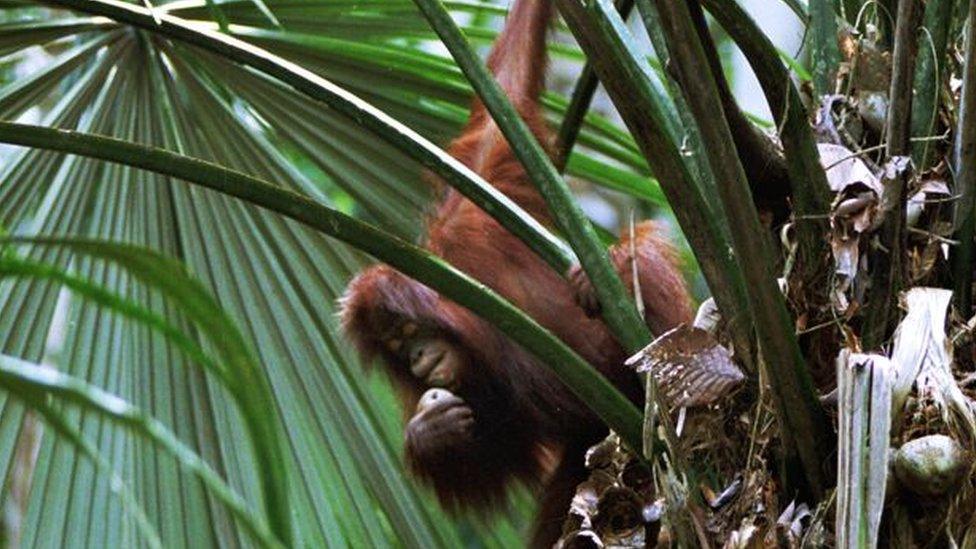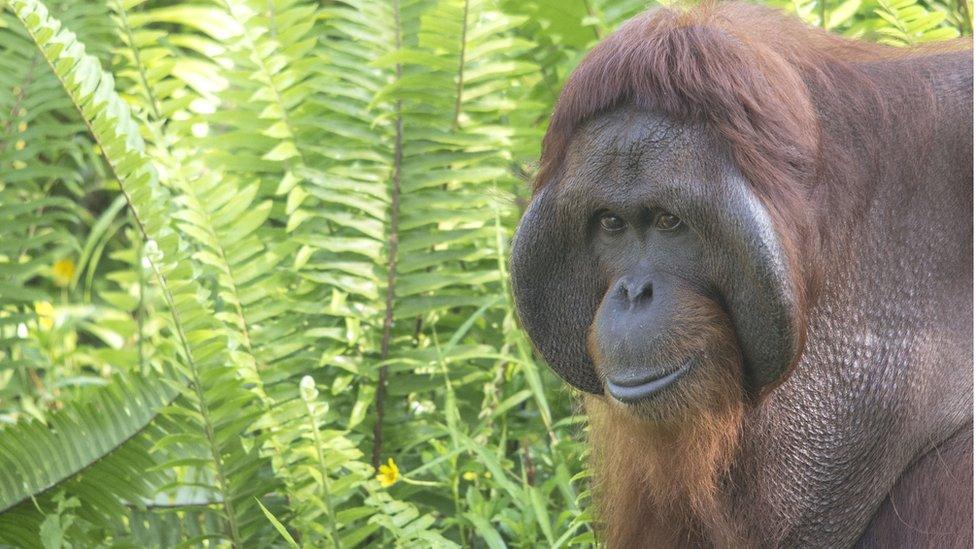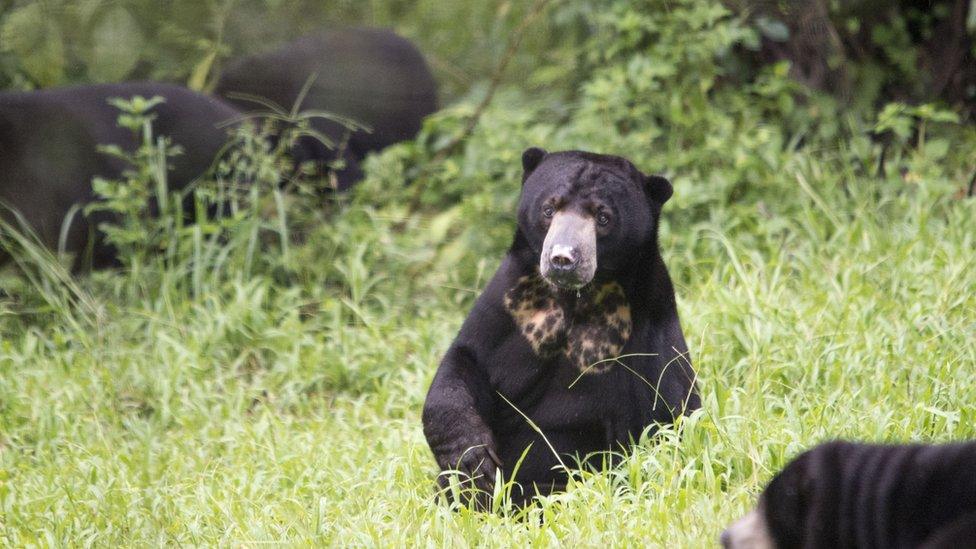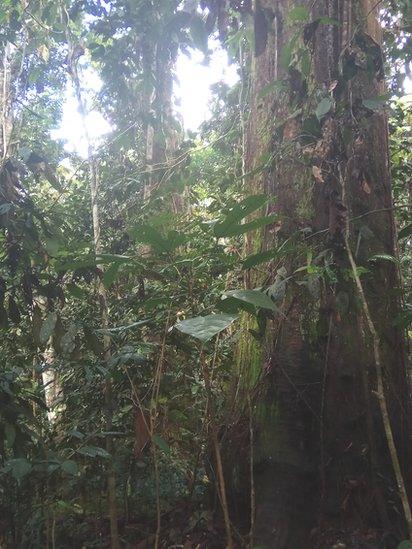Climate change: 'Future proofing' forests to protect orangutans
- Published

Orangutans need key plants to survive
A study has identified key tree species that are resilient to climate change and support critically endangered apes.
Planting them could help future proof rainforests, which are a key habitat for orangutans, according to the International Union for Conservation of Nature - IUCN, external.
Researchers surveyed 250 plants in Indonesia's Kutai National Park.
Over 1,000 orangutans are thought to inhabit the park, as well as other rare animals such as the Malayan sun bear.
"Selecting which species to plant is a significant contribution to restoring the health of this ecosystem," said study co-author Douglas Sheil.
"Of course, the reasons why forest cover was lost in the first place must also be addressed for reforestation efforts to succeed."

The park’s orangutan population could be as large as 1,000-2,000
Kutai National Park is located on the east coast of Borneo Island, in the East Kalimantan province of Indonesia.
The forest faces threats from logging, fires and mining, and was once considered a conservation wasteland.
Efforts are underway to try to restore the habitat, which is home to more than a thousand plants, 80 mammals and 300 birds, including what is thought to be the largest population of orangutans in the province.

The sun bear is a bear species occurring in tropical forest habitats of Southeast Asia
Anne Russon of York University, Ontario, said a drought in 2015 caused the deaths of many animals and trees.
Wildlife numbers are recovering slowly, she said, and studies like this one stand to contribute to nature conservation "by offering constructive methods for buffering the effects of climate change".
The study singled out two tree species for their resilience to fire, which are recommend for planting in buffer zones around fire prone areas:
A native palm, the Bendang
The hardwood tree, the Ulin.

Ulin tree: Orangutans prefer the tree for nesting
Seven plants that are likely to be climate resilient emerged as key food sources for orangutans. They include:
Dracontomelon dao, a tropical canopy tree
Kleinhovia hospita, an evergreen, tropical tree native to Indonesia, Malaysia and other parts of tropical Asia.
The report said these should be planted alongside vines the apes use for moving through the forest and trees they use for nesting, but far away from areas accessed by people.
"It will allow the trees and the habitat that orangutans rely on to survive into the future," said co-author, Dr Jamie Carr of the University of Leeds.
"It's an attempt to future proof the forest."
He acknowledged that forest restoration is not a simple task and involves many stakeholders, including the government and the mining companies who are required to carry out reforestation work.
Threatened future
Orangutans are the world's largest tree-climbing mammal - and Asia's only great ape.
'100,000 orangutans' killed in 16 years
Orangutan population up - threats remain
They were once found across South East Asia, but today are confined to two islands, Borneo and Sumatra.
Their forest habitat is rapidly disappearing, putting their future in jeopardy.
The orangutans in Borneo and Sumatra are regarded as separate species.
There are thought to be around 54,000 orangutans in Borneo.
Follow Helen on Twitter, external.